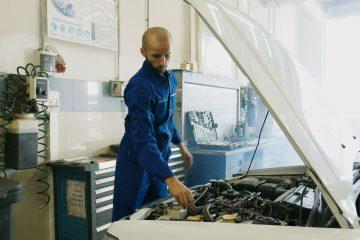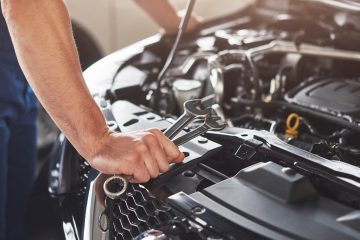Like me, a lot of my friends are seasoned do-it-yourselfers, and drove beater cars through college, making repairs themselves when they broke down. Eventually, many of them moved on to brand new cars. Still, they like to handle at least some of the work themselves. The question, then, is what to do and when.b
While a newer car is under warranty, it really is often best to let the dealership handle the work. I advise people to obtain a copy of the car’s factory maintenance schedule. The maintenance schedule will tell you what your car needs and when, and is the best way to get to know a new machine. Cars are a lot more reliable these days. You’re extremely unlikely to need to do anything aside from basic maintenance while the car is still under warranty. Start simple – monitor fluid levels. If you need to top off a fluid, be sure to check with the dealership first and see if your car needs anything specific. You can probably handle an oil change on your own, but once again, make sure you have the right oil and filter.
It’s unlikely that you’ll need belts and hoses so soon, but if you do, those are good DIY items. However, people are holding on to their cars longer these days and doing a lot more driving than they used to, so often the factory warranty runs out after a few years. Still – CHECK WITH THE DEALERSHIP FIRST. I’m not trying to discourage DIY work, but you’d be surprised how many times something is covered by a recall, and you can get your car fixed for free, or at a discounted rate.
That being said – once you’re ready to start working on the car yourself, get a repair manua. You don’t want to guess at essential torque values or other vital specifications. My philosophy is to handle simple items first, and move up in complexity as a car gets older. With a newer car, I’d be comfortable replacing fluids and bolt-on items, such as an alternator. Brake pads and rotors also fall into this category. Items such as CV axles and wheel bearings might come into play later. Depending on the make and model, these may not be a DIY item. Finally, for big items such as engine or transmission replacement, I make sure the car’s warranty is a distant memory. As repairs get more complex, the odds increase that I might not succeed. As such, my philosophy for larger items is to utilize used parts when possible and to make sure that I’m not going to potentially ruin a car that still has a significant book value.
As with all DIY work, the most important thing to do is to make sure you’re comfortable making the repair yourself. Read up on the repair in advance. If you think you can handle it, give it a try.



